Stuart, sole proprietor and sailmaker at Dabbler Sails, has sent a couple of emails with advice about rigging the new sails on Spartina. He based his suggestions on a couple of photographs from last Sunday's sail, one which I emailed to him and another that he saw on this blog. His observations and suggestions are very much appreciated. I will start making adjustments as soon as I can get back out on the water.
I've taken the very nice photograph from Jameson and blown it up beyond its useful resolution so I can point out the details that Stuart mentioned in his emails.
He mentions that the luff of the main, while very close the mast at the tack is a some distance from the mast at the throat (1). As such the luff describes a curve where as it should be a straight line parallel to the mast. I will need to find a lower point on the gaff to attach the sail.
At the tack the main should be right next to the boom. In the photo there is a gap of a few inches between the sail and the boom (2). This is easy enough to adjust, and when adjusted properly the angle of the boom will more closely match the angle of the mizzen boom.
Stuart also saw what he describes as a common fault in rigging loose footed sails. I had pulled the foot of the main taut with the outhaul at the aft end of the boom which resulted in horizontal wrinkles just above the foot (3). Pulling the foot taut would be the proper thing to do if the foot was roped to the boom. But in the case of a loose footed sail such as this the clew outhaul should be eased off, causing the horizontal folds to disappear and allowing the sail to retain an aerodynamic shape similar to the jib (which can be seen below).
And lastly, you will see the folds that go from the clew to the throat (4). This, Stuart tells me, is a sign that the sail is not peaked up enough for the wind conditions. Raising the main high enough to show wrinkles from peak to tack is the proper way to go. When Spartina falls off the wind and begins sailing those wrinkles will disappear.
Much of this information can be found on the Dabbler Sails website under notes on traditional rigs. And there is much more useful information on the Appendices page.
Thanks very much, Stuart, for the advice. I will start making adjustment on the next sail, though I suspect it might take me a while to get it right. Yes, thank you for the advice and thank you for the beautiful sails.
steve






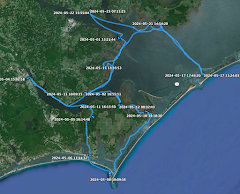
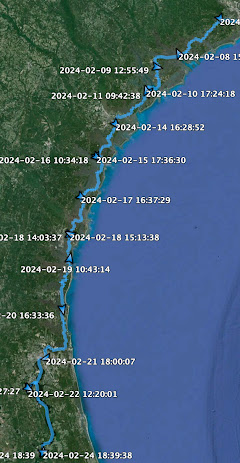

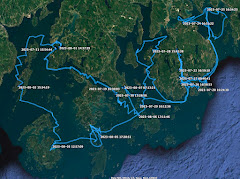

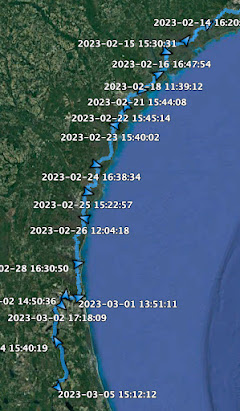

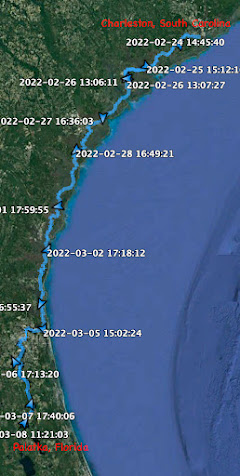
























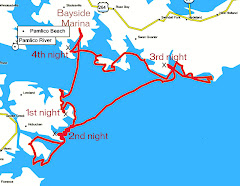


2 comments:
Hi Steve,
Have you considered a small adjustable jib track? It would allow some adjustability to the jib like the outhaul does to the main...in a blow, you move the lead back to spill the leach and top of the sail..in lighter breeze you can bring it forward a bit for more power, or on a reach help to keep the leach from falling off as you ease the sheet.
It would not look very traditional though...but it would help with not having a fixed point for the jib lead.
I always like spending other people's money! Glad you like your new sails!
-Shawn
Solomons, MD
Shawn,
I have considered it, but I really try to keep the boat as simple as possible. There might be some benefit, but I'm not sure would know how to take advantage of the possibilities. To me simpler is always better.
steve
Post a Comment